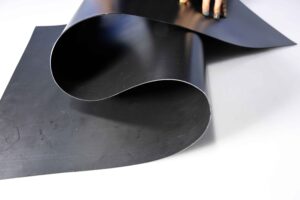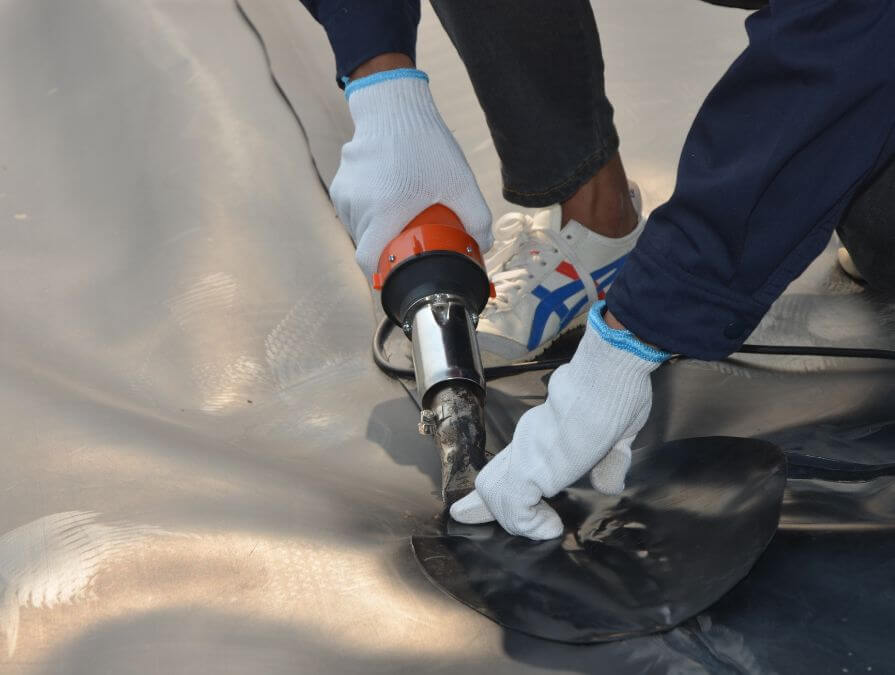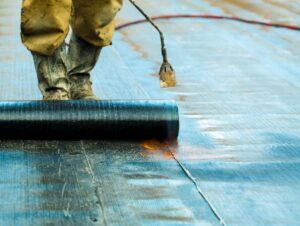Geomembrane welding refers to the construction process of connecting two pieces of geomembrane through hot melt or hot air to form a complete waterproof, anti-seepage or other functions.
The basic steps of geomembrane welding are as follows:
Preparation: Clean up the weld area, make sure the surface is clean and flat, and repair any damage or imperfections.
Welding equipment: Use professional geomembrane welding equipment, usually including welding gun or air gun, hot melt machine, etc.
Welding temperature and speed: According to the type of geomembrane and the guidance provided by the manufacturer, set the appropriate welding temperature and speed. Generally, the welding temperature should be lower than the melting point of the geomembrane, and the welding speed needs to be controlled within a reasonable range.
Welding: Aim the hot melt machine or air gun at the interface of the geomembrane, and weld at the right angle and pressure. When welding, keep a steady speed, so that the geomembrane interface can be heated evenly, so that it can be melted and bonded to each other.
Check the quality: After the welding is completed, check whether the weld is uniform and firm. Tensile testing or other quality inspections can be carried out to ensure the waterproof performance and strength of the weld.
Please note that geomembrane welding is a professional construction operation, which should be performed by professionals who have been trained and have corresponding experience. At the same time, it is necessary to abide by the relevant safety operation regulations and ensure that
Geomembrane welding temperature
It refers to the temperature required for geomembrane welding. Geomembranes are generally connected by hot-melt welding, which requires heating to melt the surface of the geomembrane and connect them together.
The specific welding temperature depends on the geomembrane material used. Common geomembrane materials include polyethylene (PE), polypropylene (PP), polyvinyl chloride (PVC), etc. Geomembranes of different materials will have different welding temperatures.
In general, the following are the conventional welding temperature ranges for geomembranes:
PE geomembrane: about 260°C;
PP geomembrane: about 260°C – 290°C;
PVC geomembrane: about 200°C – 220°C.
However, the specific welding temperature should be operated according to the technical specifications and guidance provided by the geomembrane manufacturer. Different geomembrane manufacturers may have different suggestions and requirements, so you should consult the relevant instructions of the geomembrane material before welding, and operate according to the specified temperature range.
In addition, in addition to temperature, it is also necessary to pay attention to the control of parameters such as welding time and welding pressure to ensure the quality and reliability of geomembrane welding. In order to ensure the welding effect and safety, it is recommended that professional welding personnel carry out the welding operation of the geomembrane.

Welding speed of geomembrane
It refers to the welding speed or welding travel speed during geomembrane welding. The welding speed affects the welding quality and efficiency, and it needs to be controlled reasonably according to the specific situation.
Generally speaking, the welding speed of geomembrane should be moderate, not only to ensure the welding quality, but also to improve the construction efficiency. Here are some common considerations:
Specification requirements: Different geomembrane manufacturers and project specifications may have corresponding requirements or suggestions for welding speed. Determine the reasonable welding speed range according to relevant norms and standards.
Material Type: Geomembranes of different materials may vary in welding speed. Generally speaking, if the welding speed is too fast, it will easily lead to a decrease in the quality of the weld seam, while if the welding speed is too slow, it may consume more time and manpower. Select the appropriate welding speed according to the characteristics of the geomembrane material.
External environmental factors: external air temperature, humidity and other factors may also affect the welding speed. In extreme weather conditions, such as high temperature, low temperature, etc., it may be necessary to adjust the welding speed appropriately.
Operating technology and experience: The welding speed also depends on the operator’s technical proficiency and experience. Experienced operators can control the welding speed more accurately, improving welding efficiency and quality.
In general, the selection of an appropriate geomembrane welding speed requires comprehensive consideration of the above factors, and adjustment and verification in actual construction. In order to ensure welding quality and safety, it is recommended to be operated by professional welding personnel who have been trained and have corresponding experience.
Author
-

Founded in 2002, Tinhy's team focuses on the manufacturing, marketing, installation, application and research and development of geosynthetic materials.
View all posts



